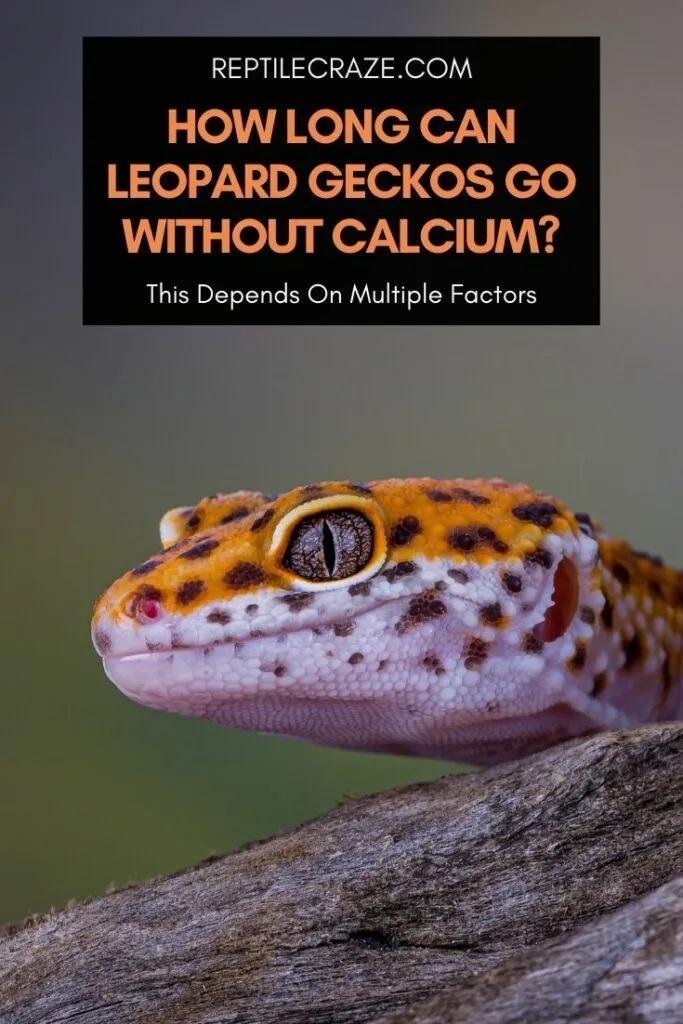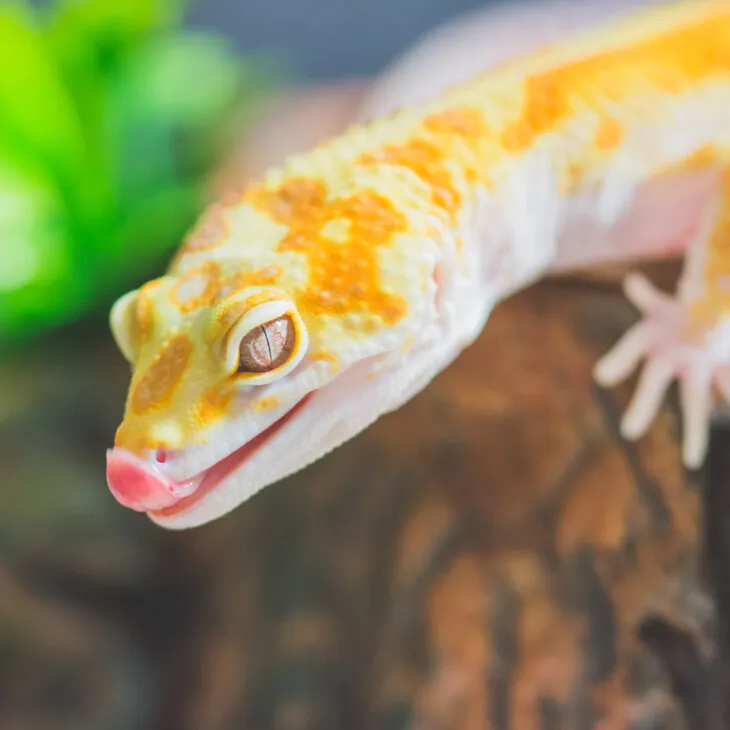
Calcium is one of the most essential nutrients for geckos. Unfortunately, most feeder insects don’t contain calcium. Therefore, leopard geckos may develop calcium deficiency unless the insects are gut-loaded or dusted before feeding.
Leopard geckos can go for approximately two weeks without calcium, since it is usually released from bones into the blood system. This lowers a gecko’s bone mass, and if calcium is not provided within two weeks, metabolic bone disease (MBD) may begin setting in.
In this article, we will look at how often you need to provide calcium to your leopard gecko, depending on their life stage. We will also look at the best way to do this, and why vitamin D is key to a healthy calcium level. Let’s go!
Table of Contents
Will My Gecko Survive Without Calcium?
Calcium is essential to all leopard geckos irrespective of age, sex or health status, but the requirements vary.
Tip: Find out if your gecko is calcium deficient in our article Is Your Leopard Gecko Suffering From Calcium Deficiency?
Younger Leos Require Frequent Calcium Intake
Baby and juvenile leopard geckos need more calcium for their growth and development. Thus, you can enrich their
Adult Leos Can Take Calcium Every Other Day
Adult leopard geckos are already grown and don’t need as frequent calcium supplementation as the young ones. You can provide calcium two to three times a week in their regular meals.
Breeding Females Need Calcium More Than Other Leos
Females producing eggs can’t go without calcium as long as other adult leopard geckos. This is because their eggs are high in calcium.
Each day that they don’t obtain calcium in their diet, their body takes calcium out of their bones. With time, their bones will demineralize, and they will go down with MBD.
Rather than relying on providing calcium with their
We show you the best way to leave calcium in the leo tank here!
Summary
We’ve provided a summary table here of how often to provide calcium to your leopard gecko at each life stage, and the best calcium source to offer:
| Life Stage | How often to give calcium | Ideal calcium source |
| Baby and Juvenile | 5-7 times per week | Dusted insects |
| Adult | 2-3 times per week | Dusted insects |
| Breeding Female | Daily | In-tank calcium supplement |
The Role of Vitamin D

While we’re on the topic of calcium for our leopard geckos, we mustn’t forget about vitamin D – or vitamin D3, to be precise.
Vitamin D3 is the essential element that helps a gecko’s body absorb calcium. Vitamin D3 is synthesized from vitamin D. Even if you are giving the right amount of calcium, it won’t do your leopard gecko any good if they can’t absorb it.
The skin forms vitamin D3 after exposure to UV light, and this is one of the reasons you need a UVB bulb for your
However, nocturnal species like leopard geckos don’t tend to bask under the light of their UVB bulb, and so they often need a dietary source of vitamin D3.
To provide vitamin D3, use calcium plus vitamin D3 powder for gut loading and dusting insects. We recommend this supplement here.
When you provide calcium in a bowl for licking, choose the one without vitamin D3, like this one. This is because geckos can lick excess of the compound leading to toxicosis.
Note: Make sure that you don’t give too much calcium to your leopard gecko by reading our guide here!
Conclusion
Leopard geckos are susceptible to calcium deficiency, leading to MBD after a short duration. Baby and juvenile geckos need an intake of calcium daily or 4 to 5 times a week, while adults need calcium 3 to 4 times a week.
You should gut-load and dust insects with a high-quality calcium + vitamin D3 powder to give your pets strong and healthy bone structures and keep MBD at bay.
For best results, choose a powder with high levels of vitamin D3 suitable for nocturnal reptiles, such as Repashy Calcium Plus HYD (vitamin D3 content: 40,000 IU/lb) or Repashy Calcium Plus (vitamin D3 content: 20,000 IU/lb).
However, egg-laying females have higher calcium requirements than other leopard geckos, since the egg formation processes extract a lot of calcium from their bones.
It’s best to provide high-quality commercial calcium supplements to pregnant females, rather than relying on gut-loading or dusting insects.
For more information on keeping your leopard gecko’s calcium levels in check, take a look at our Ultimate Leopard Gecko Calcium Guide here.
- Eastern Rat Snake: Nature’s Pest Control and Fascinating Reptile - September 20, 2024
- Eastern Racer: The Fast and Agile Snake - September 19, 2024
- The Eastern Indigo Snake: The Majestic, Non-Venomous Hunter of the Southeast - September 18, 2024
